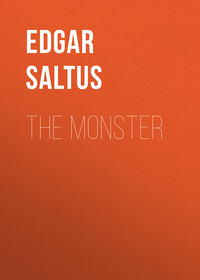 полная версия
полная версияBalzac
But perhaps the most graphic description of Balzac’s manner of writing is the one contained in an article by Edouard Ourliac in the “Figaro” for the 15th of December, 1837, of which the following is a free translation: —
THE MISFORTUNES AND ADVENTURES OF CÉSAR BIROTTEAU BEFORE HIS BIRTHLet us sing, drink, and embrace, like the chorus in an opéra bouffe; let us waft kisses in the air and turn on our toes, as they do in the ballet.
Let us rejoice now that we may. The “Figaro,” without appearing to have done so, has conquered the elements, all the malefactors, and every sublunary cataclysm.
The “Figaro” has conquered César Birotteau.
Never did the angered gods, never did Juno, Neptune, M. de Rambuteau, or the prefect of the police, oppose against Jason, Theseus, or the wayfarers of the capital, greater obstacles, monsters, ruins, dragons, demolitions, than these two unhappy octavos. We have them at last, and we know their cost.
The public will have but the trouble to read them, though that should count as a pleasure.
As to M. de Balzac, twenty days of labor, two reams of paper, another masterpiece, that counts as nothing.
Whatever else it may be considered, it is at least a typographical exploit and a worthy example of literary and commercial heroism.
Writer, publisher, and printer, all deserve the praise of their countrymen.
Posterity will gossip about the binders, and our grand-nephews will regret that they do not know the names of the apprentices.
I regret it myself, – otherwise I would tell them.
The “Figaro” promised the book for the 15th of December, and M. de Balzac began it on the 17th of November.
M. de Balzac and the “Figaro” have the singular habit of keeping their word.
The printing-press was prepared, and pawed the ground like an excited charger.
M. de Balzac sent immediately two hundred sheets, scribbled in five nights of fever.
Every one knows how he writes. It was an outline, a chaos, an apocalypse, a Hindu poem.
The office paled. The time was short, the writing unheard of. The monster was transformed and translated as nearly as possible into familiar signs. No one could make head or tail of it. Back it went to the author. The author sent back the first two proofs glued on enormous placards.
It was frightful, it was pitiful. From each sign, from each printed word, shot a penstroke, gleaming and gliding like a sky-rocket, and bursting at the extremity in a luminous fire of phrases, epithets, substantives, underlined, crossed, intermingled, erased, and superposed. Its aspect was simply dazzling.
Fancy four or five hundred arabesques of this kind, interlacing, knotted together, climbing and slipping from one margin to another and from the bottom to the top.
Fancy twelve geographical maps entangling cities, rivers, and mountains in the same confusion, a skein harassed by a cat, all the hieroglyphics of the Pharonian dynasty, or twenty fireworks exploding at once.
The office then was far from gay. The typesetters beat their breasts, the presses groaned, the proof-readers tore their hair and the apprentices became howling idiots. The most intelligent recognized the Persian alphabet, others the Madagascan, while one or two considered them to be the symbolic characters of Vishnu.
They worked on chance and by the grace of God.
The next day M. de Balzac sent back two pages of the purest Chinese. It was then the 1st of December. A generous typesetter offered to blow out his brains. Then other sheets were brought, written in the most legible Siamese. Three compositors lost their sight and the little French that they knew.
The proofs were sent back seven consecutive times; then, a few symptoms of excellent French appeared, and there was even noticed a certain connection between the phrases; but the day was fast approaching, and we felt that the book would never appear.
Desolation was at its height, and it was at this point that the work became further complicated by an admirable concourse of calamities.
At the time when haste was the greatest, the miserable being who that night carried the proof-sheets to M. de Balzac was waylaid and robbed.
M. de Balzac had had the forethought to establish himself at Chaillot. The miserable being screamed and yelled. The bandits took to their heels. One proof-sheet was found at Neuilly, another in an orchard, a third descending the Seine. It is certain that they were thrown away only on account of their illegibility. Misfortune has its advantages.
The proofs were recovered, but the night was lost. There were cries and gnashing of teeth. The end was fast approaching. However, the typesetters took courage and the workmen took the bit in their teeth. The office galloped. The compositors foamed at the mouth, the presses ravened, the binders were on springs, the apprentices danced with excitement, the proof-reader shook like an epileptic, and the foreman had convulsions. The office was a cage of palsied lunatics.
The work was again taken in hand, and M. de Balzac and the “Figaro” have kept their word.
“César Birotteau” will see the light of day on the 15th of December. We have it now, and we hold it tight. The office is armed, insured, and barricaded. Smoking is not permitted. There are lightning-rods on the roof, and mounted guards at the door.
Every precaution has been taken against accidents and the ardor of our subscribers.
At this moment “César Birotteau” is a work in two volumes, an immense tableau, an entire poem, composed, written, and corrected fifteen times by M. de Balzac in twenty days, and deciphered, disentangled, and reprinted fifteen times in the same period. It may be added that M. de Balzac kept forty other workmen busy with something else at another office.
We will not now consider the value of the work.
It may be everything, or but a masterpiece.
The names of Balzac’s characters are all taken from real life; for, like Dickens, his theory was that names which were invented gave no life to imaginary creations, and, as did the English novelist, he gathered many of them from the signboards in the street. His joy at the discovery of Matifat was almost as great as his delight in finding Cardot. He found the former in the Rue de la Perle, in the Marais. “I can see him now,” he said; “he will have the pallid face of a cat. But Cardot is different: he will be dry as a bone, hasty and ill-tempered.”
In 1840, Balzac proposed to write for the “Revue Parisienne” – a periodical which, it may be explained, appeared but three times, and whose three numbers Balzac wrote entirely – the story of a man of genius, who, used as a tool by others, died through the ingratitude of those whom he had raised to magnificent positions, and who had then abandoned him to poverty and want.
Such a character needed a name proportioned to his destiny; a name which explained and announced him as clearly as the cannon-ball announces the cannon; a name which would be peculiarly his own, and would reflect his face, his figure, his voice, his past, his future, his genius, his passions, his misfortunes, and his glory.
But this supernatural alliance of man and name was not immediately discoverable, and Balzac, who had put into circulation as many cognomens as are contained in the “Almanach de Gotha,” expressed himself incapable of manufacturing it. A name, he considered, could no more be fabricated than could granite or marble. They were all three the work of time and revolutions. They made themselves.
As a last and supreme resource, therefore, he set out one day, in company with Léon Gozlan, on a journey, in search of a baptismal signboard for his hero; and from the Barrière de l’Étoile to the summits of Montmartre they zigzagged across Paris, subjecting every name they encountered to the closest scrutiny.
Thousands of names were examined, analyzed, and rejected, until at last Gozlan, utterly worn out, refused to walk another step.
Balzac looked at him, it is to be supposed, very much as Columbus looked at his mutinous sailors, and by force of entreaties obtained, not three days’ grace, but three streets more.
In the first two nothing was found, but at the extremity of the third Balzac suddenly changed color, and cried in a voice broken by emotion, —
“There, there! Read that name!”
Above a narrow, oblong door, which opened on a sombre courtyard, there hung a sign which bore for device the name of Marcas.
“Our journey is at an end!” Balzac exclaimed; “it terminates in a blaze of glory. The name of my hero shall be Marcas. Marcas contains the philosopher, the statesman, and the poet. I will call him Z. Marcas, and thereby add to his name a flame, a tiara, and a star. Nothing could be better. I wonder, however, who this Marcas is; surely some great artist.”
“He is a tailor,” Gozlan brutally replied; “there is another sign of his in the courtyard.”
Balzac looked deeply chagrined.
“No matter,” he said; “he merited a better fate. If I seem annoyed, it is not that I am lacking in respect for tailors in general, but because his calling reminds me of certain debts and a few protested notes.”
A day or two later the “Revue Parisienne” appeared, and with it the story of Z. Marcas, now forming part of the “Scènes de la Vie Politique” and containing the following monograph: —
“A certain harmony existed between the man and the name. This Z. with which Marcas was preceded, which was to be seen on the address of his letters, and with which he always completed his signature, – this last letter of the alphabet presented to the imagination a something which was indescribably fatal.
“Marcas! Repeat over to yourself this name, composed of two syllables: does it not seem to contain a sinister significance? does it not seem as though its owner were born to be martyred.
“Though weird and wild, this name has nevertheless the right to descend to posterity: it is well composed, it is easily pronounced, and possesses the brevity required of famous names. Is it not as soft as it is bizarre? but does it not also seem unfinished?
“I would not dare to affirm that destiny is uninfluenced by a name, for between the deeds of men and their names there are inexplicable affinities and visible discords which at once astonish and surprise. But this subject will some day assuredly form part of the occult sciences.
“Does not the Z. present a thwarted and contradicted appearance? does it not represent the contingent and fantastic zigzags of a tormented life? What ill wind can have blown on this letter that in every language to which it is admitted commands barely fifty words! Marcas’ Christian name was Zépherin. Saint Zépherin is highly venerated in Brittany. Marcas was a Breton.
“Examine the name again. Z. Marcas! The entire existence of the man is contained in the fantastic assemblage of these seven letters. Seven! – the most significant of the cabalistic numbers. Marcas died at the age of thirty-five; his life therefore was composed of but seven lustres. Marcas! Does not the sound bring to you the idea of something precious, broken in a noiseless fall?”
The fatality which Balzac conceived as attaching to Marcas was by no means limited to this imaginary creation. It followed him into real life, and was at one time a source of such serious preoccupation that he stood one evening for two hours in the square of the Château d’Eau confidently awaiting some fortunate occurrence, and like Gautier in “Mademoiselle de Maupin” he awoke on certain days in a state of great agitation, trembling at every noise, and convinced that the happiness of his life was somehow at stake.
These extraordinary sensations naturally led to a belief in the supernatural; and as his mother, who was also interested in the abnormal, was acquainted with all the celebrated mesmerists and mediums of the day, he was readily furnished with opportunities of experimenting in magnetism and clairvoyance. His charming story of “Ursule Mirouët” unquestionably proves that he subsequently became a firm believer in that occult electricity which is variously known as the Theopœa of the ancients, the Akâsa of the modern Hindu, and the psychic force of Sergeant Cox; while his account of the soul-projection of “Séraphita” is vivid enough to satisfy the most exacting hierophant, and would have passed him, initiate, into the brotherhood of the Theosophists.
But perhaps the most curious evidence of his every-day faith in divination is that contained in the two following extracts from his correspondence: —
TO M. CHAPELAIN, PHYSICIANParis, May, 1832.Sir, – I am attracted by the power of somnambulism, and wonder why you have not sought to obtain from some lucid subject the causes of this disaster.12
Science is interested therein, and its discovery would be an eternal honor to us.
Had I not been ill for a week past I would have ascended to the honors of practice, and endeavored to convince myself whether the power of a somnambulist was limited or infinite.
The second extract is from a letter addressed to his mother a year later: —
“I send you herewith two pieces of flannel which I have worn on the body. Take them to M. Chapelain, and when he has examined the first, ask of him the cause and position of the malady13 and how it should be treated. See that everything is clearly explained. Then with the second piece ask the why and wherefore of the blister ordered in the precedent consultation.
“Be careful to keep the flannels well wrapped up, that the emanations may not be disturbed.”
Balzac’s hatred of journalists was intense, and from Sainte-Beuve down to the most insignificant penny-a-liner all were enveloped in the same superb contempt.
No branch of the profession was exempt from this antipathy, and critics and feuilletonistes shared alike in his wholesale condemnation: —
“They want my scalp, do they, these Mohicans of the press! Bah! I will drink out of their skulls.”
Drink he did, indeed, and long delicious draughts, at that; and in picking up with the point of his pen the venality, envy, and petty spites of the trade, he drew in the “Illusions Perdues,” in which Jules Janin figures in the transparent disguise of Étienne Lousteau, a picture of journalism which was as faithfully unpleasant as it was pitying and contemptuous. In this respect, however, it is well to state that no one was as indifferent to the opinion of the press as Balzac himself. He rarely, if ever, read the criticisms on his books, and left them, in the consciousness of their worth, to find their level unaided.
One of the causes of his disdain of everything which smacked of journalism was this: He had engaged to write “Séraphita” for the “Revue des Deux Mondes,” and shortly after the story had been delivered he learned that it was published at St. Petersburg. Thinking, as was but natural, that the editor had been the victim of some audacious theft, he hastened to tell him what he had heard; and his astonishment may be readily imagined when he was informed that the Russian edition had appeared with the sanction of the editor himself, who not only insisted that he had a perfect right to do as he pleased with the manuscript, but positively refused to make any indemnity. Thereupon, Balzac, in spite of the remonstrances of his friends, who pointed out that any contest with the “Revue,” whose word was law, would inevitably result in the closing of its columns to him, began a lawsuit, alleging that, independent of the pecuniary loss which he suffered, a precedent of this kind, once established, would in the future be highly prejudicial, not only to him, but to all his confrères. Much to his amazement, however, the defendant appeared in court with a list of signatures of almost all of those whom he had sought to defend at his own risk and peril, who attested that from a literary as well as from an ethical standpoint they considered the action of the editor of the “Revue des Deux Mondes” as eminently right and proper.
The law was, none the less, perfectly clear. Balzac won the suit, and with it a host of enemies, whose hatred was so vigorous that it barely abated, even after his death. Their insults delighted him. “Fire away,” he would say; “the armor is strong. Your abuse is an advertisement; your praise would lull the public to sleep, but your diatribes wake them up. Besides, you hit the mark sometimes, and every fault you signalize I correct, which in the end is so much gained.”
Among the host of enemies thus aroused were those who, not content with denying his genius, advanced their artillery into private life, and painted him in the possession of every vice in the criminal statutes; and it is from the falsehoods of these guerrilleros that all the stupidities which have been told concerning him found their primal gestation. Not only his morality, his honesty, his sobriety, were attacked, but even his name was denied to him. The de was declared not only an affectation, but a theft; and when some one said to him, in allusion thereto, “But you are no connection of the De Balzac d’Entragues,” “Ah! am I not?” he answered placidly. “Well, then, so much the worse for them.”
CHAPTER II.
THE COMÉDIE HUMAINE
“One would say he had read the inscription on the gates of Busyrane, – ‘Be bold;’ and on the second gate, – ‘Be bold, be bold, and evermore be bold;’ and then again had paused well at the third gate, – ‘Be not too bold.’” – Emerson, Plato.
The general plan and outline of the “Comédie Humaine” originated in a comparison between humanity and animal existence. That which Buffon had achieved in zoölogy, Balzac proposed to accomplish in moral science, and the habits and customs as well as the vices and virtues of his contemporaries found in him a secretary whose inventory offers to posterity an elaborate insight into the every-day life of France in the nineteenth century, and realizes for their future curiosity that work which the ancient monarchies have neglected to bequeath to us as their own civilizations.
But the pictures of two or three thousand of the most striking figures of an epoch required, in a general history of society, not only frames but galleries, and the work therefore is divided into,
Scènes de la Vie Privée.
Scènes de la Vie de Province.
Scènes de la Vie Parisienne.
Scènes de la Vie Politique.
Scènes de la Vie Militaire.
Scènes de la Vie de Campagne.
These six subdivisions are grouped under the general title of “Études de Mœurs,” and in them the attempt has been made to examine and explain the general causes of earthly happiness and misery, as demonstrated in the results obtainable in the practice of the great principles of order and mortality, or in the selfish abandonment to purely personal interests.
Happiness, Balzac considered, consisted in the exercise of our faculties as applied to realities. But inasmuch as its principles vary with each latitude, and ideas of right and wrong find their modifications in the climate, he concluded that morals and convictions were valueless terms, and that happiness was to be found, first, in violent emotions which undermine existence; second, in regular occupations functionating like mechanism; or, lastly, in the study of the laws of nature and in the application of the lessons thereby derived.
In his treatment of this subject he has prepared a complete history of the effects of the agitation of social existence, and each of the foregoing divisions represents a particular aspect of life.
In the “Scènes de la Vie Privée,” life is represented between the last developments of childhood and the first calculations of virility. These scenes contain tableaux of the emotions and undefined sensations combined with pictures of the errors committed through ignorance of the exigencies of the world.
The “Scènes de la Vie de Province” represents that phase of existence in which passions, calculations, and ideas take the place of sensations, impulses, and illusions. The instincts of the young man of twenty are generous; at thirty he calculates and turns egotist. These scenes therefore initiate the reader into the thousand aspects of the transition through which a man passes when abandoning the thoughtless impulses of adolescence for the politic attitudes of manhood. Life becomes serious: positive interests jostle with violent passions, disillusions begin, the social machinery is revealed, and from the shock of moral or pecuniary interests the crime bursts in the midst of the most tranquil household.
Herein are unveiled the petty annoyances by whose periodicity a poignant interest is concentrated in the slightest detail of existence. Herein are also exposed the petty rivalries, the jealousies born of vicinage, and the family worries, whose increasing force degrades and weakens the most resolute will. The charm of dreams escapes; the prosaic and the matter of fact alone exist; woman reasons, and no longer feels; she calculates where before she gave. Life is now ripened and shaded.
In the “Scènes de la Vie Parisienne” the questions are enlarged, and existence painted in bold outlines gradually arrives at the frontiers of decrepitude. Herein purity of sentiment is exceptional: it is broken in the play of interests and scattered by the mechanism of the world. Virtue is calumniated, innocence is purchased. Passions become vices, emotions ruinous gratifications; everything is analyzed, bought, and sold. Life is a bazaar; humanity has but two forms, that of the deceiver and the deceived; it is a struggle and a combat, and the victor is he who best throttles society and moulds it to his own ends. The death of relatives is awaited; the honest man is a simpleton; generosity is a means, religion a governmental necessity, probity a policy; everything is marketable; absurdity is an advertisement, ridicule a passport, and youth, which has lived a hundred years, insults old age.
These scenes close the tableaux of individual existence, and their three frameworks contain representations of youth, manhood, and old age. First the bloom of life, the expansion of the soul, and the radiance of love; then come the calculations, the transformation of affection into passion; and, lastly, the accumulation of interests and the continual satisfaction of the senses joined to the inevitable weariness of mind and body.
Nothing but that which affects the individual proper has herein been treated, and the fragments of the “Scènes de la Vie Politique” express, in consequence, a wider range of thought. In these pages the actors represent the interest of the masses, and place themselves above those laws to which the types in the preceding series were subjected. The foregoing divisions described the constant antagonism of thought and sentiment, but in these scenes thought is an organizing force and sentiment is completely abolished. They are, however, incomplete, as are also the “Scènes de la Vie Militaire,” in which Balzac proposed to represent the action as taking place, not in an apartment, but on the battle-field; not in the struggle of man with man, but in the concussion of France and Europe, in the slaughter of the conquered and the pæans of the victors.
After these pages, whose completion was prevented by his sudden death, the calm and peaceful pictures of the “Scènes de la Vie de Campagne” follow in orderly sequence. They represent rest after exertion, landscapes after interiors, the hush of the country after the uproar of the city, the cicatrice after the wound. This last division contains the same interests and the same struggles, but weakened now by lack of contact, like passions grown dull in solitude. It is the twilight of a busy day, a summer evening solemn with sombre shadows. It contains the purest characters and the application of the great principles of order, morality, and religion, and its actors, worn with the fatigues of the world, mingle complacently with the innocence of childhood.14
Thus completed, the entire work has its geography and its own genealogy, its localities and their concomitants, its personages and their deeds. It has its own armorial, its nobility and middle class, its artisans, its peasants, and its army. It is a world in itself. But its most striking feature is the admirable unity preserved throughout; and this unity is undoubtedly due to a suggestion derived from the works of Sir Walter Scott, whom Balzac considered as a gifted sculptor who chiseled magnificent figures and draped them with genius and sublimity, but, while presenting the seductive effects of a marvelous analysis, left them lacking in synthesis and totally unrelated.











